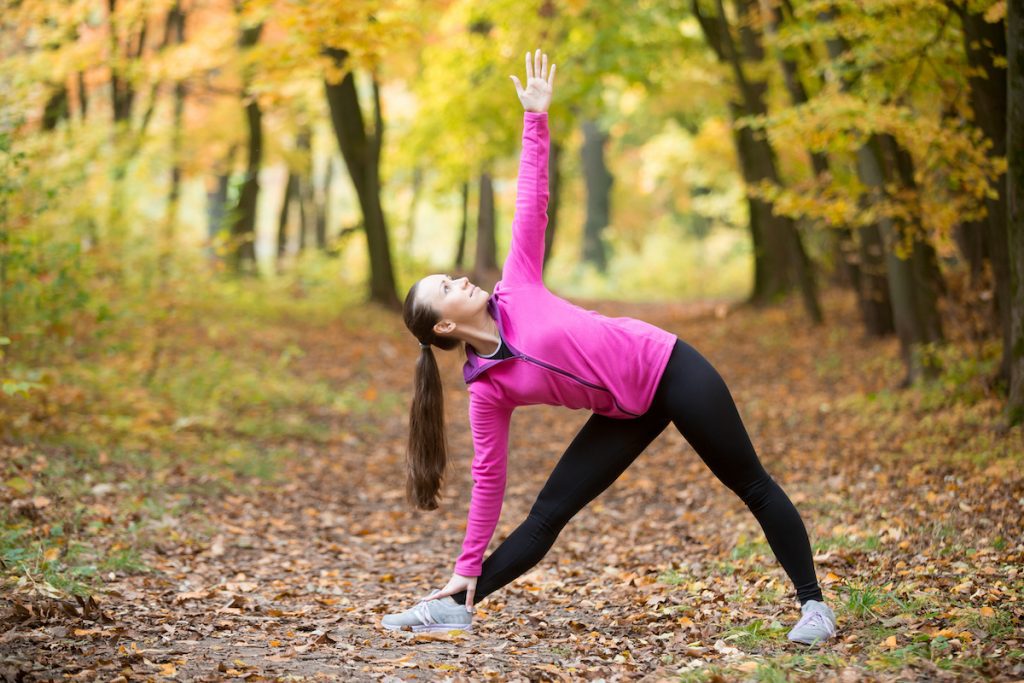With cooler weather and vibrant fall colors, many fitness enthusiasts are excited to workout outdoors. However, with the changing season comes unique challenges that can impact safety. Whether you’re a runner, cyclist, hiker, or just love outdoor workouts, it’s important to take precautions to stay safe.
Here are some fall safety tips for working out outdoors to ensure you can enjoy the season while maintaining your fitness routine.
1. Dress in Layers for Comfort and Safety
Fall weather can be unpredictable, with temperatures varying significantly from morning to afternoon. Dressing in layers for outdoor workouts helps you stay comfortable throughout your workout.
Start with a moisture-wicking base layer to keep sweat away from your skin. Add a breathable mid-layer for insulation and top it off with a wind-resistant or waterproof jacket to protect against cold winds and unexpected rain.
Avoid cotton clothing, which can retain moisture and leave you feeling cold and uncomfortable.
2. Stay Visible in Low-Light Conditions
With the sun setting earlier, many outdoor exercisers find themselves running or cycling during dawn or dusk, when visibility is lower. Wear brightly colored or reflective gear, such as vests, wristbands, or shoes to make sure you’re visible to drivers and other exercisers.
Wear a headlamp or carry a flashlight if you’re exercising in low-light conditions. This not only makes you more visible but also helps you see the terrain ahead, reducing the risk of tripping or falling over obstacles like roots, rocks, or uneven pavement.
3. Watch Your Footing on Slippery Surfaces
Falling leaves can create slippery surfaces, especially when wet. Take extra care on trails or sidewalks covered with leaves, as they can hide hazards such as potholes, rocks, or uneven surfaces. Adjust your pace and pay close attention to your footing, particularly when running or hiking downhill.
Wear proper sneakers for the trails that have good traction to prevent slips and falls especially when running. Consider using trekking poles for added stability if hiking on uneven or slippery terrain.
4. Hydrate Properly Even in Cooler Weather
Cooler temperatures can sometimes mask the body’s need for hydration, but staying properly hydrated is just as important in the fall as it is in summer. The body loses moisture through sweat, even in cooler weather, and dehydration can affect performance and increase the risk of injury.
Carry a water bottle with you for outdoor workouts. Drink water before, during, and after your workout, and listen to your body’s signals. Remember that thirst is often a late indicator of dehydration.
5. Warm Up and Cool Down
With cooler temperatures, muscles and joints tend to be stiffer, increasing the risk of injury. Spend extra time warming up before your workout to get your blood flowing and prepare your muscles for exercise. Dynamic stretches, such as leg swings, high knees, and arm circles, can help increase your range of motion and prevent strains or sprains.
Similarly, cooling down after exercise helps gradually bring your heart rate down and prevents muscle soreness. Incorporate static stretching and deep breathing exercises to relax your muscles and enhance recovery.
6. Be Aware of Shorter Daylight Hours
Shorter days mean less sunlight, so plan your outdoor workouts with daylight in mind. If you’re running, cycling, or hiking, start earlier in the day to maximize natural light and avoid being caught out in the dark. Always inform someone of your workout plan, route, and estimated return time.
If you do find yourself exercising after dark, stick to well-lit, familiar routes and carry a fully charged phone for emergencies.
7. Stay Prepared for Weather Changes
Fall weather can change rapidly, from sunny skies to sudden rain or gusty winds. Check the weather forecast before heading out and be prepared for unexpected changes. Carry a lightweight jacket that is both wind and water-resistant.
Learn the signs of hypothermia, such as uncontrollable shivering, confusion, or fatigue, especially on longer workouts. If you or your workout partner experience these symptoms, seek shelter, change into dry clothes, and warm up gradually.
8. Watch Out for Seasonal Allergies
Fall allergies are common. These include allergies to ragweed, pollen, and other allergens. If you suffer from seasonal allergies, check the pollen count on the forecast and schedule outdoor activities when pollen counts are lower, usually in the late afternoon. Consider taking allergy medication as needed and avoid exercising in areas with high levels of allergens, such as wooded trails.
9. Respect Wildlife
Fall is a busy time for wildlife as animals prepare for winter. Be aware of your surroundings, especially in wooded or rural areas. Make noise to alert animals to your presence, and avoid approaching or feeding them. Stick to marked trails and respect natural habitats to minimize your impact on local ecosystems.

